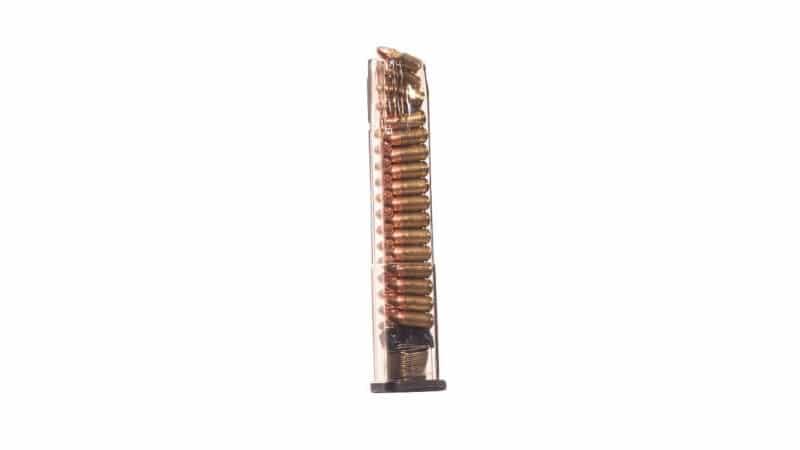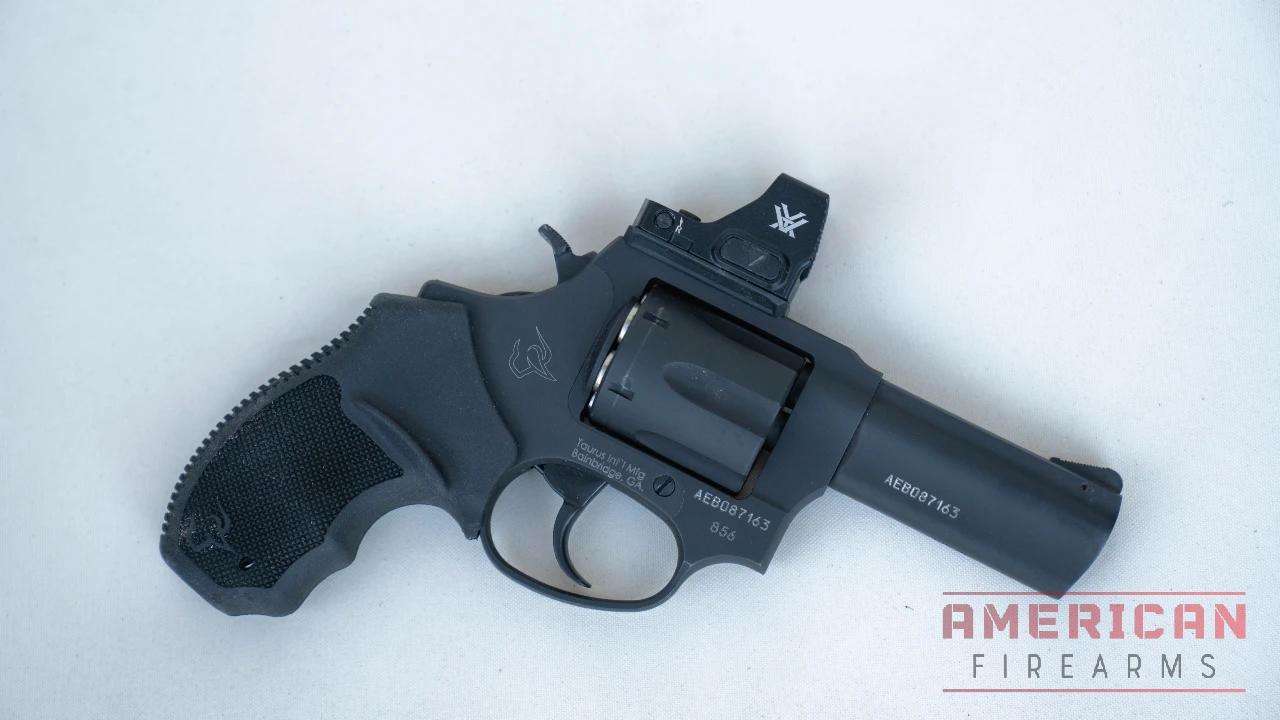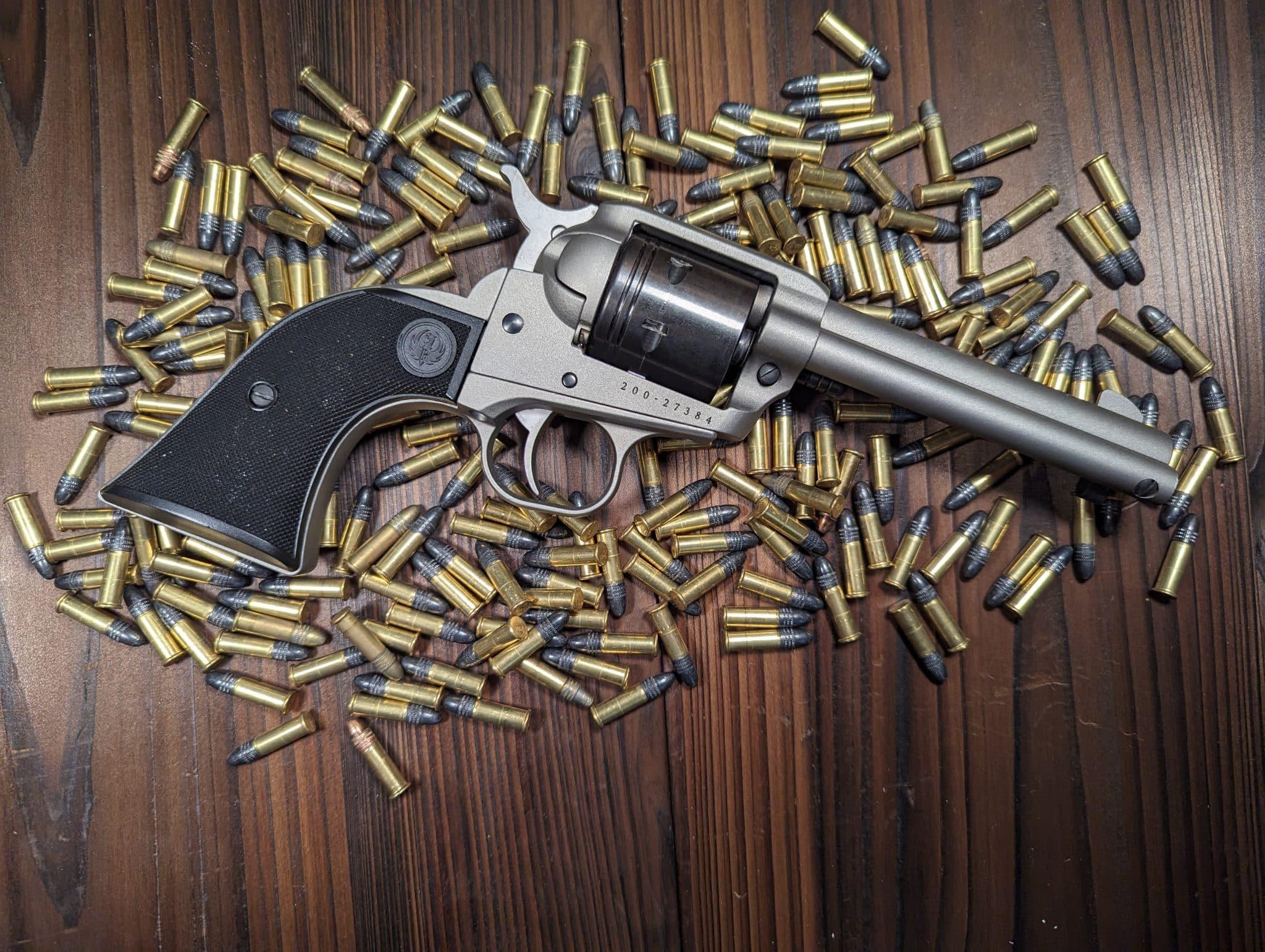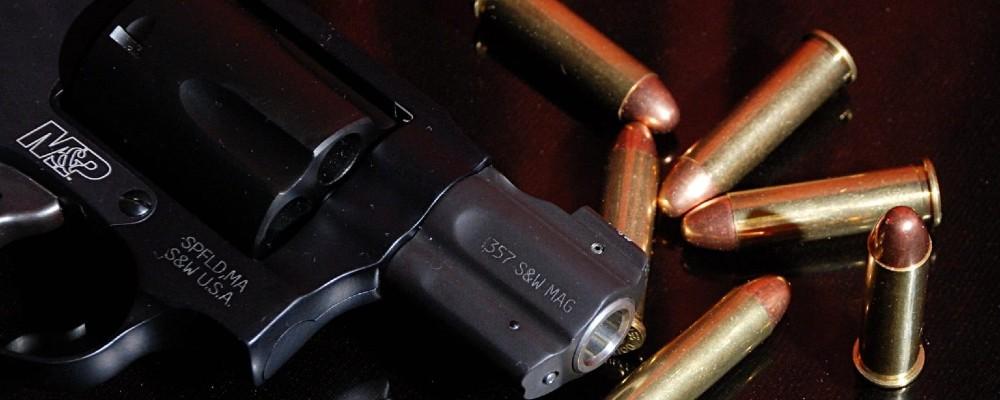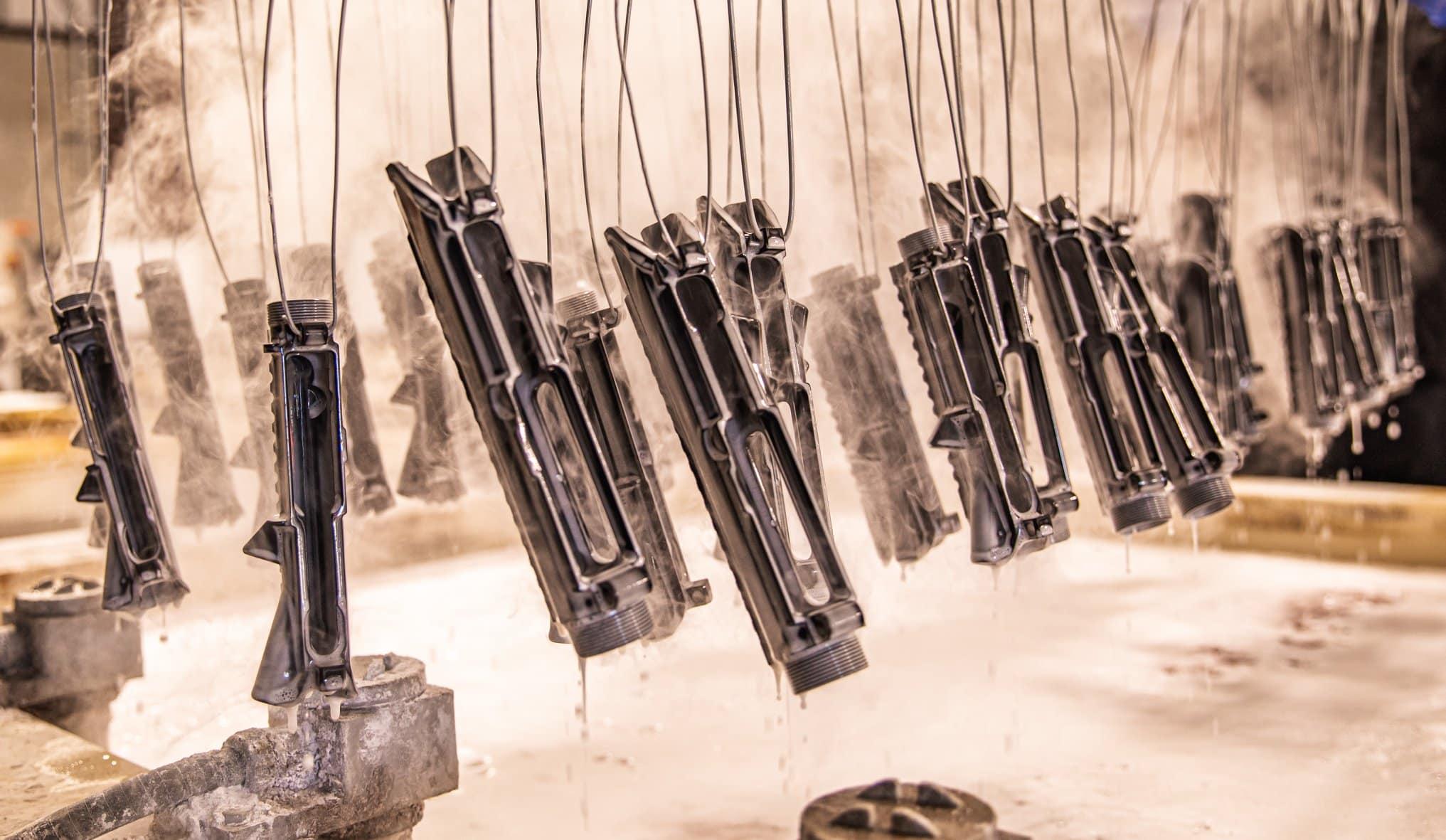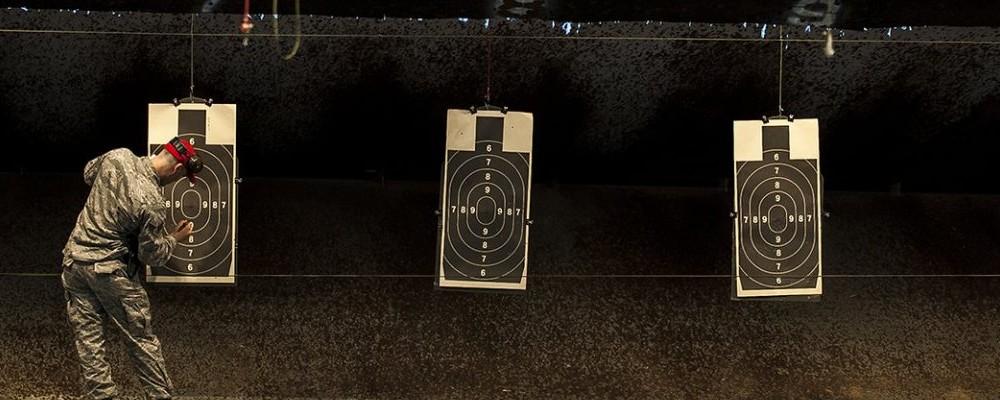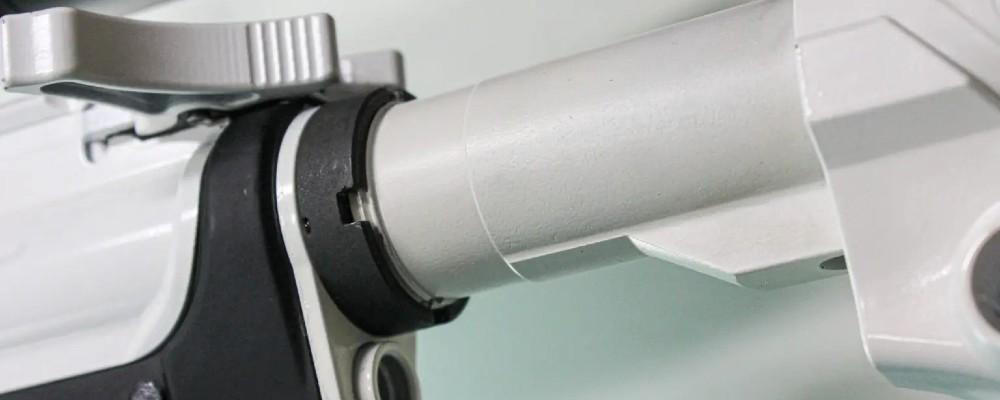In-Depth Review: M&P Shield 2.0 Compact [Hands-On]
Written By
Michael Crites
Licensed Concealed Carry Holder
Reviewed by
Editorial Team
Learn About The Editorial Team
Share:
Products are selected by our editors. We may earn a commission on purchases from a link. How we select gear.

Updated
Dec 2025
Is Smith & Wesson’s second-generation M&P Compact one of the best polymer-framed handguns on the market today?
I put this striker-fired pistol through its paces and help you determine if this affordable 9mm is right for you.
In This Article
Understanding the M&P Lineup
Which Gun Are We Actually Talking About?
Before we dive into the full review, let’s clear up something that confuses the hell out of a lot of shooters: Smith & Wesson’s M&P naming convention is a mess, and if you’re not careful, you’ll end up comparing apples to oranges. The M&P M2.0 Compact reviewed here is NOT the same gun as the M&P Shield 2.0, despite what the similar names might suggest. They’re not even close.
I’ve lost count of how many times I’ve overheard a new pistol buyer at my LGS thinking they were getting a slim single-stack Shield when they actually ordered the much larger M2.0 Compact, or vice versa. The confusion is real, and Smith & Wesson’s marketing team deserves at least some of the blame for that.
Here’s the straight talk: The M&P M2.0 Compact is a mid-sized, double-stack 9mm pistol that ships with a 15-round flush-fit magazine and a 4-inch barrel. It’s Smith’s direct answer to the Glock 19, designed for the same mission profile—versatile enough for duty, home defense, and concealed carry. The M&P Shield 2.0, on the other hand, is a single-stack subcompact that holds 7+1 or 8+1 rounds, designed purely for deep concealment. Then there’s the M&P Shield Plus, which splits the difference by packing 10+1 or 13+1 rounds into a Shield-sized frame.
M&P Model Comparison
| Model | Barrel Length | Capacity | Width | Height | Weight (Unloaded) | Best Use |
|---|---|---|---|---|---|---|
M&P M2.0 Compact | 4.0" | 15+1 | 1.2" | 5.0" | 24 oz | Duty/CCW/Home Defense |
M&P M2.0 Compact 3.6" | 3.6" | 15+1 | 1.2" | 4.6" | 23 oz | Concealed Carry |
M&P Shield 2.0 | 3.1" | 7+1/8+1 | 0.95" | 4.6" | 18.3 oz | Deep Concealment |
M&P Shield Plus | 3.1" | 10+1/13+1 | 1.0" | 4.6" | 20.2 oz | Concealment with Capacity |
The M2.0 Compact we’re reviewing here is the 4-inch model, though Smith also makes a 3.6-inch version that keeps the same 15-round capacity in a slightly shorter package. Both are substantially wider and heavier than either Shield variant, which matters when you’re deciding how to carry daily.
In my experience working with hundreds of shooters over the years, the choice usually comes down to your primary use case. If you’re looking for a true do-everything pistol that can handle range work, competition, duty carry, and concealment when needed, the M2.0 Compact makes sense. It’s what I’d hand to someone who said “I want one gun that does it all.” The Shields are specialists—they excel at concealment but give up shootability and capacity to get there.
The M2.0 Compact sits in what I call the “Goldilocks zone” for a lot of shooters. You get nearly full-size capacity (15+1 versus 17+1 in the full-size M2.0), enough sight radius and barrel length for practical accuracy out to 50 yards, but you can still carry it concealed with the right holster and clothing. I’ve carried the 4-inch model for extended periods using a quality IWB rig, and while it’s noticeably bigger than a Shield, it’s not uncomfortable if you dress around the gun.
One more critical distinction: the M2.0 Compact is also available in an optics-ready configuration with mounting plates for popular red dots. That variant uses the same slide cut as the full-size M2.0, giving you serious flexibility for adding a reflex sight. None of the Shield models currently offer factory optics-ready variants, though aftermarket slide milling is always an option.
Now that we’ve established exactly which gun we’re talking about, let’s dig into what makes the M&P M2.0 Compact worth your attention—or why you might want to look elsewhere.
How We Tested The M&P M2.0 Compact
Feel & Accuracy Testing
We start every evaluation from a bench rest to establish the gun’s mechanical accuracy potential, independent of shooter error. For the M&P M2.0 Compact, we fired five 5-round groups at 25 yards using Federal Premium Syntech 124-grain ammunition—a consistent, quality training load that I’ve used for accuracy testing across dozens of handguns.
Reliability Testing
Here’s where we separate the guns that work from the guns that work sometimes. We ran 500 rounds of mixed FMJ range ammunition in rapid succession without cleaning or additional lubrication beyond the factory lube.
Durability Assessment
A carry gun needs to withstand daily handling, holster wear, and environmental exposure without falling apart. After our accuracy and reliability testing, we evaluated the M&P M2.0 Compact’s construction and finish quality.
Concealment Evaluation
While the M2.0 Compact is larger than dedicated concealment guns, many shooters carry mid-size pistols concealed daily. We tested the gun’s concealability in multiple carry positions and with different body types.
Overall Score

$459.99

55
EXCEPTIONAL
Performance Scores
Our Verdict
The S&W M&P M2.0 Compact is very close to being perfect when it comes to a modern “do everything” combat handgun.
It is small enough to carry comfortably either openly or concealed when using the proper holster and technique while proving large enough to have a long enough sight radius to provide practical accuracy at realistic self-defense ranges at 25 yards and under.
A rock-solid reliable pistol in testing that can carry weapon-mounted lasers and lights as well as accepting extended capacity magazines, it stands ready for home defense.
In short, Smith’s mid-size Compact 9mm is an easy choice for a dependable modern handgun that is affordably priced and is (almost) a “Glock killer.”
Test Scores
How does the S&W M&P 2.0 Compact score on our 60-points scale?
Accuracy: 9/10
Exhibits solid accuracy with consistent performance in various shooting conditions, distances, and ammo types.
Ergonomics: 9/10
Offers a comfortable and customizable grip, with features that cater to a wide range of hand sizes and shooting preferences.
Features: 9/10
Includes a comprehensive set of modern features like an extended stainless steel chassis, modular grip frame, and durable combat-style sights.
Fit & Finish: 9/10
The Shield has excellent craftsmanship with an even and durable finish, reflecting the attention to detail you can expect from Smith & Wesson.
Reliability: 10/10
Exceptionally reliable, even with extensive testing and various ammunition types.
Value: 9/10
The Shield 2.0 provides great value for its price, balancing quality features, reliable performance, and affordability.
Specifications
Caliber: | 9mm Luger |
Action: | Single action striker-fired |
Capacity: | 15+1 with flush-fit magazines / optional 10- and 17-round factory mags |
Barrel Length:, 4 inches | |
Overall Length: | 7.25 inches |
Overall Height: | 5 inches (with a 12-round magazine) |
Overall Width: | 1.3 inches over the thickest part of the frame |
Grip frame: | Polymer with steel slide rail inserts |
Weight: | (with an empty 15-round magazine) 27 ounces |
Weight: | (test gun loaded with 16 147-grain JHPs) 34.5 ounces |
Sights: | Steel white three-dot style. Fixed front / windage adjustable rear. |
Slide: | Stainless steel with a black Armornite durable corrosion-resistant finish |
Barrel: | Stainless steel with a black Armornite durable corrosion-resistant finish |
Safeties: | Firing pin block / trigger safety insert lever / loaded chamber indicator (LCI) / optional manual safety. |
Evolutionary History
Smith & Wesson has been around since 1852, making them among the oldest of American firearm makers, a hallmark only bested by Remington’s circa 1816 claim. However, while Remington has been all over the place when it comes to offerings, S&W has always been known and revered for their well-made and innovative handguns.
Smith’s first semi-auto centerfire pistol, Charles Clement’s Model 35, appeared on the market in 1913 chambered in .35 S&W Auto.

Their first successful 9mm– and the first accepted American-made pistol in that caliber– was the Model 39 which appeared when Ike was President.
The Model 39 was well-liked, even used by the SEALs in Vietnam, and led to the 15+1 capacity Model 59 by the 1970s. This evolved into S&W’s third-generation “Wondernines” of the 1980s and 1990s, which were the gold standard for law enforcement in that era.
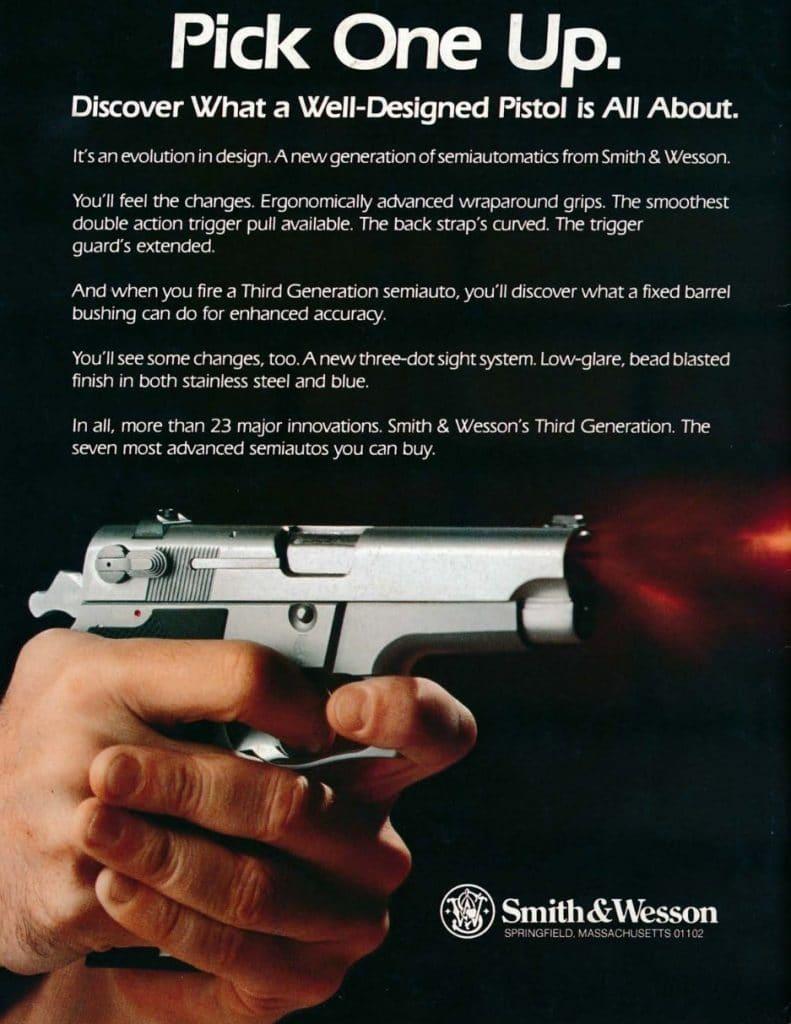
However, as firearms technology evolved and Smith lost market share to Austrian newcomer Glock, who specialized in comparatively less expensive striker-fired polymer-framed handguns, the days of the flashy, all-metal, hammer-fired Wondernine were numbered.
To compete, in 1993, Smith introduced the short-lived SD or Sigma, a gun co close to the Glock 17 in styling that it was derided as the “Swock” when it hit store shelves.
Learning from their mistakes, the company kept some things about the SD/Sigma that worked and were well-received, such as its optimal 18-degree grip angle for a natural point of aim, and developed the M&P series semi-auto pistols in 2006, with several variations in each caliber.
Much more successful than the Sigma, the M&P pistols saw steady adoption both in law enforcement use and with the public. Taking a decade of feedback, in 2017, Smith & Wesson introduced the second generation M&P M2.0 standard which tweaked almost every aspect of the original M&P.
To provide extra rigidity and reliability, the M2.0 uses an extended stainless steel chassis. For reduced muzzle rise and faster aim recovery to deliver follow-up shots, these 2nd Gen guns have a low grip-to-barrel bore axis ratio, an engineering feature that provides better control. Finally, the M2.0s have a fine-tuned crisper trigger with a tactile audible reset, as well as aggressive grip texturing and grip modularity using four easily interchangeable palm swell inserts.
While the original early M&P series included an M&P 9c (Compact) variant, which used a 3.5-inch barrel and 10 or 12 shot magazines, in addition to longer full-sized models and the sub-compact M&P Shield pistols, Smith in late 2017 dropped the kind of wonky-sized M&P 9c in favor of the slightly larger and greatly improved M2.0 Compact that we know and love today.
While the old M&P 9c was a rough match for the “Baby Glock” G26, the modern M2.0 Compact was clearly intended to take on Glock’s G19.
M&P Shield 2.0 Compact
Features
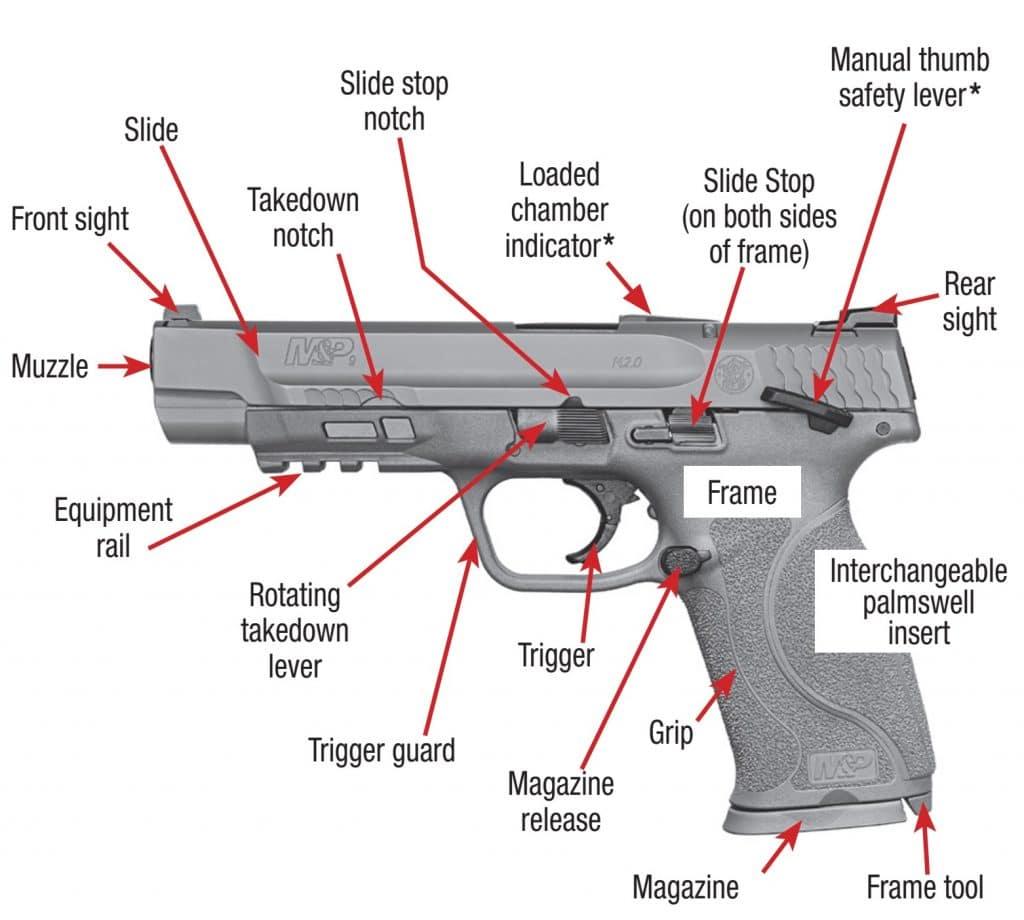
As denoted by the “M2.0” designation, the Compact is a second-generation installment in Smith & Wesson’s M&P series handguns.
This means it has an extended rigid embedded stainless steel chassis to reduce flex and torque when firing and a modular grip frame with multiple palmswell inserts to adjust to a wide range of users.
Carried over from the first-gen models is a low bore axis that makes the gun more comfortable to shoot while at the same time reducing muzzle rise allowing users to get back on target more easily.
Also standard are front and rear slide serrations, an equipment rail on the frame that accepts standard pattern pistol accessories such as weapon-mounted lights/lasers, and combat-style sights that are rugged enough to assist with one-handed emergency reloads.
Controls
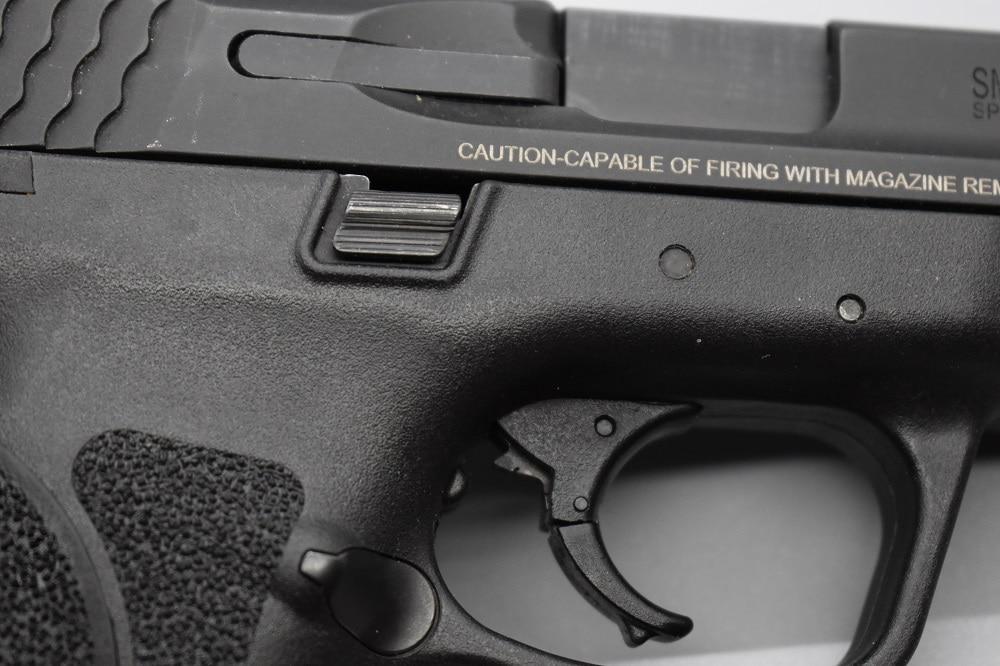
The S&W M&P M2.0 Compact is ambidextrous to a degree when it comes to surface controls. On all models, it has a fenced-in slide stop lever on both sides of the frame which allows for manipulation with either hand.
The push-button American-style magazine release button comes from the factory installed on the left-hand side of the frame, to be easily thumbed by the right hand.
However, the release can be easily swapped out to the other side of the frame at the user level with the help of a small screwdriver in about 15 minutes. The manual that comes with the pistol covers the step-by-step process of swapping the mag release as do several free videos on YouTube.
Purpose
S&W M&P M2.0 Compact fills the void in the company’s striker-fired polymer-framed category between full-sized or standard models– which are ideal for duty use, home defense, and open carry– and the smaller Shield line of pistols which are intended for use as concealed carry or backup guns.
This puts the Compact within striking distance of checking both boxes, in other words, serving as either a duty gun for law enforcement or capable of home defense, while still being short and light enough to carry concealed comfortably.
A kind of “universal” pistol, if you will, with wide appeal.
It is no mistake that the M&P M2.0 Compact is a doppelganger in size, caliber, and capacity to the Glock 19, which is usually the best-selling handgun in the country month after month.
Magazines
The M&P M2.0 Compact typically ships with two flush-fitting 15-round steel body magazines with a grey follower and a polymer baseplate.
This is notably different from the polymer-bodied mags used in Glocks.
For those trapped in or moving to magazine-restricted states (i.e., California, Connecticut, Hawaii, Maryland, Massachusetts, New Jersey, and New York), Smith markets the pistol with 10-rounders.

For those who want a couple of extra rounds or have a full-sized M&P9 in the safe already, the Compact will accept the 17-round mags of that larger format gun and even ships with a pair of polymer sleeves to fill the gap between that longer mag and the Compact’s shorter grip.
In testing, I found absolutely nothing to complain about in the use or maintenance of the factory S&W M&P magazines and they dropped clear when pressing the push-button mag release every time.
Speaking of which, for left-hand users, the release button is swappable in a simple process that takes about 15 minutes.
Sadly, these awesome and reliable factory mags tend to cost more than comparable Glock factory sticks, usually about $10 or $15 more on average, and, while easy to find, are nowhere near as commonly encountered.
There are a few companies making aftermarket mags, with Elite Tactical Systems Group, commonly just seen as ETS, being probably the best of the lot. ETS makes 17, 21, 30, and 40-round transparent 9mm double stacks for the S&W M&P series that are priced right, with all options usually running $25 or under.
Sights
One of the most obvious “wins” in the fight between the S&W M&P M2.0 Compact and the Glock 19 is that the Smith has steel three-dot combat style sights whereas the Austrian pistol comes with polymer U-notch-dot sights.
While it sounds petty, the fact that the Smith’s sights are durable enough to remain on the slide if the pistol is dropped or the slide is racked roughly alongside the barricade in a one-hand reload drill is a big deal.
I found our test unit to be on-target to point of aim right out of the box, but should the user encounter the need to tweak the layout, the rear sight can be tap adjusted for windage once the set screw is loosened.
While S&W only offers M2.0 Compact models with factory-installed Tritium night sights in their “Law Enforcement Only” line, dealers often sell these models to the public and the pattern is easy enough to find via aftermarket night sight makers, thus allowing upgrades at the user level for those that can’t lay hands on an LEO.
Testing
In running over 2,000 rounds through my M&P M2.0 across five range trips and three shooters, I fired everything from 115-grain to 165-grain (HUSH RN Subsonic) in bullet size and multiple profiles from Aguila, CCI, Federal, PMC, PPU, Remington, S&B, Tula, Winchester, and Wolf.
This included target, range, and self-defense loads and cases made of aluminum, brass, nickel, and steel. The result was that the S&W M&P M2.0 proved a hungry beast that could not be choked.
In short, if it is factory 9mm Luger ammo that still looks the same color as it did when it left the factory, it will probably run in the Smith.
Quality Control
Smith has been in the gun biz for going on two centuries, with the last two decades of that making polymer-framed striker-fired pistols.
They have it figured out and the customer is not the beta tester.
The fit and finish of our review M&P was even and done correctly with few things I could complain about.
While some polymer pistol makers have an issue with excess material, or flash, leftover from the molding process, Smith doesn’t fall into that trap, and everything feels smooth where it is supposed to and uniformly rough where it is supposed to be textured.
The surface controls all worked with no sticking and the all-over Armornite finish was even without strawing.
Grip & Ergonomics
The M&P series from the beginning has used an 18-degree grip angle for a more natural point of aim, and I found that this theory held up in testing.
A modular style pistol, it comes from the factory with four (S, M, ML, L) user-interchangeable palmswell grip inserts for optimal hand-fit and trigger reach.

These swap out on the fly by simply dropping the mag and clearing the chamber, removing the frame tool at the end of the magwell, lifting the grip insert and rocking in another then reinstalling the frame tool.
I found the M2.0 Compact easily controllable due to the extensive and aggressive grip texture on the frame, which extends to the palmswell inserts.
Trigger & Reset
When compared to 1st Gen M&P models, the new M&P M2.0’s factory trigger is crisp and lighter with a tactile and audible reset.
A two-piece trigger with a safety device fitted into the shoe, it has a curve to it and a little bit of a creep as a result. Smith tells us the targeted spec for the M2.0’s trigger pull is 5.5 pounds and I found that to run closer to the 5-pound mark in an average of a dozen test pulls on a digital trigger gauge.
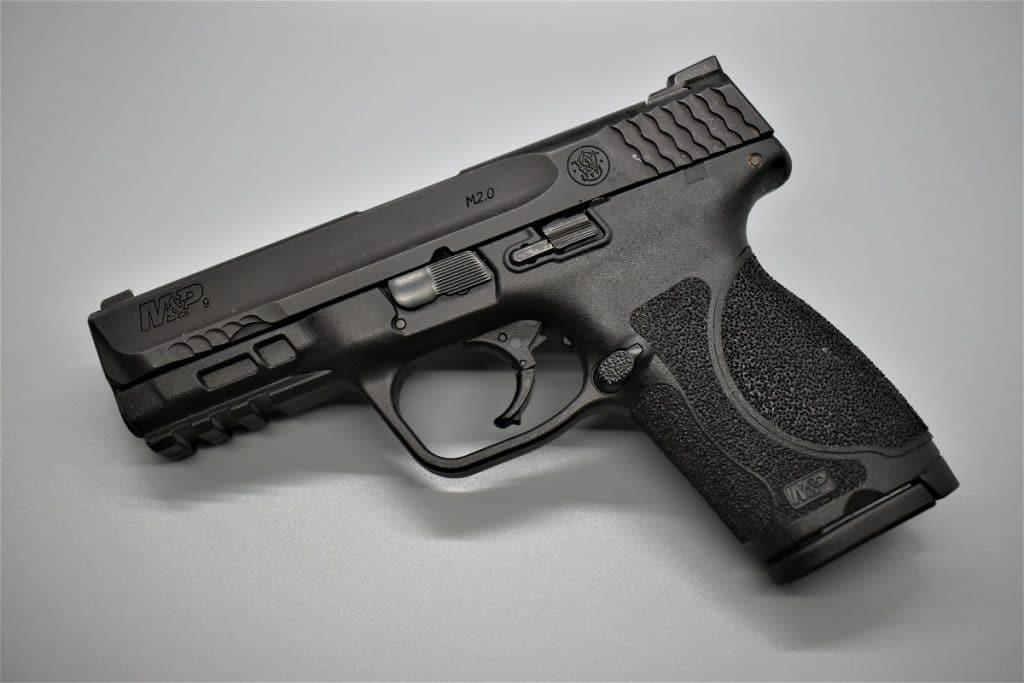
For those who want something better, Apex offers a flat-faced drop-in aftermarket replacement.
Available in several colors for those who want to point out that they spent an extra $169 on a trigger pack, the Apex trigger is billed as reducing trigger pre-travel, over-travel, and reset distance.
Accuracy & Reliability
| Ammunition | Vel. (fps) | E.S. (fps) | S.D. (fps) | 25-Yd. Acc. (in.) |
|---|---|---|---|---|
9mm Luger 4.0-In. Barrel | ||||
Federal Premium Syntech 124-gr. TSJ | 1128 | 26 | 10 | 2.75 |
Winchester USA 115-gr. FMJ | 1189 | 38 | 15 | 3.25 |
Remington UMC 115-gr. FMJ Bulk Pack | 1165 | 42 | 18 | 3.75 |
Federal American Eagle 124-gr. FMJ | 1142 | 31 | 12 | 3.00 |
PMC Bronze 115-gr. FMJ | 1178 | 35 | 14 | 3.50 |
CCI Blazer Brass 115-gr. FMJ | 1171 | 33 | 13 | 3.25 |
Sellier & Bellot 124-gr. FMJ | 1136 | 29 | 11 | 3.00 |
NOTES: Accuracy is the average of three, five-shot groups fired from a sandbag benchrest with factory white three-dot sights. Velocity is the average of 10 rounds measured 12 feet from the gun’s muzzle. All testing conducted with M&P M2.0 Compact featuring 4.0-inch barrel. +P ammunition tested to verify proper function and reliable feeding in +P-rated chamber. Steel-cased ammunition (Wolf, Tula) showed slightly larger extreme spreads due to manufacturing tolerances but functioned reliably throughout testing.
Between the better M2.0 trigger, an upgrade from past models, the three-dot steel sights, and the 1:10-inch twist M&P barrel, the Compact is set up for decent practical accuracy. W
e found it capable of eating out the center of a silhouette target in two-handed shooting at standard distances on a static range of 15 yards and under.
When firing from a bench or with an Olympic-style one-hand stance at 25m I was still on target even with junk bulk pack ammo.
Speaking of which, I went case-deep in testing, running well over 2,000 rounds across several range sessions through our review pistol without any failures I can pin on the gun.
I stopped halfway through to field strip and run a snake through the bore as well as to apply some more lube, and the Compact kept sewing like a machine.
As the whole top half uses Smith Armornite durable corrosion-resistant finish, marring and wear were at a minimum.
I’d recommend changing out the springs once you pass the 5K mark, but those are cheap and easy to find.
M&P M2.0 Compact vs. Glock 19 Gen 5
Let’s address what everyone’s actually wondering: How does this stack up against the Glock 19? I’ve logged thousands of rounds through various G19s over the years, from Gen 3s at the range to Gen 5s in IDPA competition.
The polymer-framed, striker-fired Glock 19 hit the market in 1988, at a time when S&W was still selling thousands of their more traditional all-metal, hammer-fired Wondernines.
While Glock had enough feedback and experience with their designs to have their 3rd Generation models on the shelf for several years by the time S&W got into the polymer game with the original M&P series, it wasn’t until the M2.0 Compact was released in 2017– at which point Glock was on their 5th Generation of guns– that Smith had a pistol that was dimensionally a dead ringer for the G19. In terms of height, weight, width, and length, the S&W M&P M2.0 Compact and the Glock 19 are fundamentally the same.
They also share a standard 15+1 shot capacity and have an accessory rail to accept lights and lasers. Both guns have a trigger shoe insert that serves as a safety device to help prevent accidental discharges.
The Smith compact one-ups the well-known Glock in a few ways. It has much better steel sights that are adjustable which are far and away superior to the easily-mutilated fixed plastic sights on the Glock.
The American-made 9mm also has, in my opinion, much more aggressive grip texturing besides the fact that it ships with four interchangeable palmswell grip inserts compared to the 5th Gen Glock’s standard two extra beavertail backstraps, winning the ergonomics fight.
In my opinion, the S&W M&P M2.0’s factory trigger is crisper than the comparable Glock trigger.
Meanwhile, the Glock 19, likely by nature of it being around for more than 30 years whereas the M2.0 Compact wasn’t a thing until 2017, has an ocean of aftermarket accessories to include sights, magazines, triggers, and holsters against the Smith’s much smaller pool of support to draw on.
The Glock 19 has earned its reputation as the gold standard do-everything pistol, and any gun competing in this space lives in its shadow. The M&P M2.0 Compact was clearly designed to steal market share from Glock, so let’s see if it delivers.
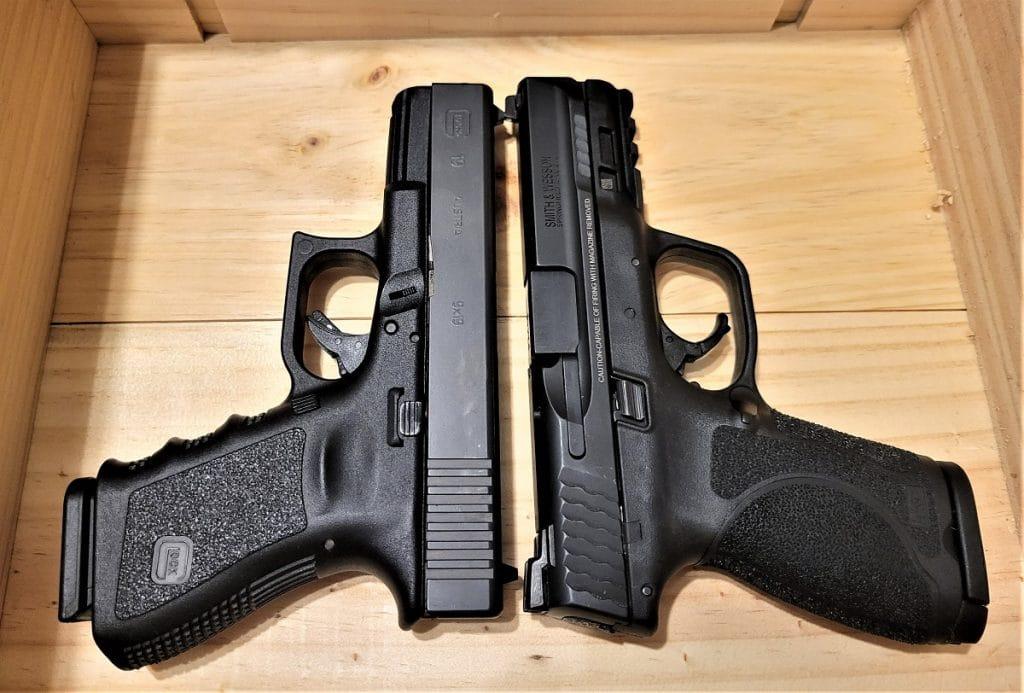
Head-to-Head Specifications
| Specification | M&P M2.0 Compact | Glock 19 Gen 5 |
|---|---|---|
Overall Length | 7.3" | 7.36" |
Barrel Length | 4.0" | 4.02" |
Height | 5.0" | 5.04" |
Width | 1.2" | 1.34" |
Weight (Empty) | 24 oz | 23.6 oz |
Capacity | 15+1 | 15+1 |
Trigger Pull | ~5.5 lbs | ~5.5 lbs |
Sight Radius | 6.0" | 6.1" |
MSRP | $569 | $599 |
On paper, these guns are damn near identical. The differences are measured in fractions of an inch and ounces. In practical terms, they occupy the same physical space and deliver the same round count. But the devil’s in the details, and those details matter when you’re betting your life on a pistol.
Ergonomics: Where the M&P Pulls Ahead
The M&P M2.0 Compact wins the ergonomics battle decisively. The grip angle on the Smith sits at 18 degrees versus the Glock’s steeper 22 degrees, and for most shooters, that translates to more natural point-of-aim. When I bring the M&P up from the holster, it points exactly where I’m looking. With the G19, I have to make a slight conscious adjustment. After enough reps, your body adapts to either platform, but the M&P requires less adaptation for most shooters.
The aggressive texturing on the M2.0 is another clear advantage. Glock’s RTF (Rough Textured Frame) on the Gen 5 is adequate, but the M&P’s grip texture provides superior purchase without needing stippling work. I’ve run this gun in rain, with sweaty hands after extended strings of fire, and with gloves in cold weather—it sticks like it’s glued to your palm. The trade-off is that some shooters find it abrasive against bare skin during concealed carry, which is why I always run an undershirt when carrying IWB.
The four interchangeable backstraps on the M&P versus Glock’s two also give you more options for dialing in the perfect fit. For shooters with smaller hands or those trying to optimize trigger reach, that extra granularity matters. My wife, who has significantly smaller hands than I do, found a comfortable grip with the small backstrap on the M&P but struggled with even the smallest Glock configuration.
Trigger: Surprisingly Competitive
This is where Smith made the most dramatic improvement from the original M&P line. The first-generation M&P triggers were universally panned as mushy, gritty, and heavy. The M2.0’s trigger is a different animal entirely. Both guns break at roughly 5.5 pounds out of the box, but the Smith’s pull is cleaner with a more tactile reset. The Glock’s blade safety sits centered on the trigger shoe, while the M&P uses a hinged design that some shooters find less crisp. I’m in that camp—I prefer the Glock’s blade design—but the M&P’s trigger is functional and predictable.
Where the Glock maintains an edge is trigger geometry. The G19’s trigger face is flatter and shorter, which some shooters find more comfortable. The M&P’s trigger has a more pronounced curve that can feel cramped with larger hands. During rapid-fire strings, I occasionally find my trigger finger placement inconsistent on the M&P in ways that don’t happen with the Glock. That said, with an Apex trigger kit—which runs about $170—the M&P’s trigger can be transformed into arguably the best striker-fired trigger available. The Glock aftermarket is deeper, but the M&P can match or exceed it with the right parts.
Reliability: Dead Heat
Both guns are boringly reliable. I’ve put over 2,000 rounds through this M&P M2.0 Compact without a single malfunction attributable to the pistol. My experience with various Glock 19s across multiple generations shows the same pattern. Neither gun is ammunition-sensitive. Both will eat cheap steel-case, premium defensive loads, and everything in between without complaint. The only “failure” I experienced with the M&P was a single light primer strike on Winchester NATO-spec ammo, which reignited on a second strike. That’s the ammunition, not the gun.
The M&P does have one documented quirk: the rear sight can work loose after the first few hundred rounds. This happened on the NRA’s 2,000-round torture test and on several user-reported examples. Five minutes with Loctite Blue solves the problem permanently. Glock sights stay put from the factory. Advantage Glock, but it’s minor.
Aftermarket Support: Glock Still King
Here’s where the Glock maintains its clearest advantage. The G19 has been the default law enforcement and civilian carry pistol for decades, which means the aftermarket is enormous. Need a holster? You’ll find fifty options at any gun shop. Want night sights, extended magazines, trigger kits, or custom slides? They’re everywhere and competitively priced.
The M&P M2.0 has solid aftermarket support—Apex Tactical makes excellent triggers, magazine extensions are readily available, and most major holster manufacturers offer M&P options—but it doesn’t match the sheer depth and breadth of Glock parts. If you’re the type who likes to tinker and customize, that matters. For most shooters running a bone-stock gun, the difference is less relevant.
Price and Value: M&P Edges Ahead
The M&P M2.0 Compact typically streets for $450-$480, while the Glock 19 Gen 5 runs $500-$550. That $50-70 price difference is enough to buy two boxes of quality defensive ammunition or a decent holster. Both guns come with three magazines in the box, though the M&P’s steel-body magazines feel slightly more robust than Glock’s polymer offerings.
From a pure value perspective, the M&P delivers more gun for less money. Better ergonomics, superior grip texture, four backstraps versus two, and a trigger that’s competitive out of the box. The Glock counters with proven law enforcement adoption, deeper aftermarket support, and a track record that spans decades rather than years.
The Verdict: Which One Should You Buy?
Choose the Glock 19 Gen 5 if you prioritize maximum aftermarket support, want the gun most gunfighters carry, or prefer Glock’s trigger geometry. It’s the safe choice, the proven choice, and you won’t go wrong.
Choose the M&P M2.0 Compact if ergonomics matter more than tradition, you want superior grip texture without modification, or you’re looking for the best value in this category. It’s the better-shooting gun for most people, and that matters more than brand loyalty.
Personally? If I could only own one mid-size 9mm and had to buy it today, I’d take the M&P M2.0 Compact. The ergonomics are just that much better, and after thirty-plus years of shooting, I’ve learned to trust what feels right in my hands. But I wouldn’t argue with anyone who chose the Glock—it’s genuinely that close.
The real answer is to rent or borrow both guns and shoot them back-to-back. Your hands will tell you which one is right, and either choice will serve you well for decades.
The Optics-Ready Variant
I’ve shed some ink on optics on carry pistols before, but putting my particular read on the issue aside, Smith & Wesson offers the M&P M2.0 Compact in an optics-ready configuration, and this is where things get interesting for shooters who’ve embraced red dots on pistols.
The slide comes milled from the factory with a mounting system that accepts adapter plates for most popular micro red dot footprints. You’re not limited to one proprietary mounting pattern—Smith includes multiple plates in the box, giving you flexibility to run whatever optic you prefer.
The system uses what Smith calls their “M&P M2.0 RDO” (Reflex/Red Dot Optic) slide cut. It’s a large oval cutout on the top of the slide with threaded holes that accept mounting plates for Trijicon RMR, Leupold DeltaPoint Pro, Vortex Venom/Viper, C-More STS/RTS, Doctor/Noblex, and Burris FastFire patterns. Smith ships the gun with cover plates installed, so if you’re not ready to mount an optic immediately, the slide remains sealed against debris.
I’ve run several hundred rounds through an M2.0 Compact equipped with a Trijicon RMR Type 2 in 3.25 MOA, and the mounting system holds up well. The plate doesn’t loosen under recoil, the zero stays put, and the overall package remains reliable. The height-over-bore with the RMR mounted is noticeably higher than iron sights alone—you’re adding roughly 0.5 inches—but it’s comparable to other pistols using slide-mounted optics rather than milled slides.
For defensive and carry use, my preferred red dot size is 3-3.25 MOA. Larger dots like 6-6.5 MOA are faster for close-range work but obscure targets at distance. Smaller dots like 1 MOA precision models are unnecessarily precise for a defensive pistol. If you’re new to pistol red dots, the Trijicon RMR Type 2, Holosun 507C, and Aimpoint Acro P-2 represent the gold standard for durability and battery life. The Holosun offers the best value, the Trijicon has the strongest track record, and the Aimpoint is built like a tank but costs accordingly.
One consideration many shooters overlook: suppressor-height sights become critical on an optics-ready gun. The factory sights on the standard M2.0 Compact sit too low to co-witness with most red dots. Smith ships the optics-ready variant with taller sights, but they’re still just white dot rather than tritium night sights. I immediately swapped to Trijicon HD XR night sights in suppressor height—they co-witness in the lower third of the optic window and remain fully usable if the red dot fails or the battery dies.
Carrying a red dot-equipped pistol presents some challenges. The optic adds bulk, height, and weight. My carry setup with the RMR mounted weighs 28.2 ounces empty versus 24 ounces for the standard gun—that’s over four ounces heavier, and you feel it after a full day of carry. The extra height also means you need holsters specifically cut for optics. Most modern Kydex makers offer optic-compatible versions, but selection is more limited than standard holsters.
The benefit? Faster target acquisition and better accuracy at distance. I’ve found that with the red dot, my first-round hits at 25 yards improved noticeably. The dot also allows you to keep both eyes open more easily, maintaining better peripheral awareness in dynamic situations. For competition use or home defense, a red dot on the M2.0 Compact makes excellent sense. For daily concealed carry, it depends on your willingness to deal with the added bulk and weight.
If you’re considering the optics-ready variant, my recommendation is straightforward: buy it even if you’re not ready to mount an optic today. The cost difference between standard and optics-ready is typically $50-75, which is far less than aftermarket slide milling would cost later. You preserve optionality without committing to running a red dot immediately. Install quality suppressor-height night sights from the start, and you’ll have a gun that works perfectly well with irons while remaining ready for an optic when you decide to make the jump.
One final note: Smith also offers a Performance Center version of the M2.0 Compact with a ported barrel and slide, factory-tuned trigger, and optics-ready slide. I haven’t tested that variant extensively, but the standard optics-ready model delivers everything most shooters need without the questionable benefit of barrel porting on a defensive pistol.
Worth Considering: Competitive Alternatives
The M&P M2.0 Compact is an excellent mid-size 9mm, but it’s not the only excellent option in this category. The concealed carry and duty pistol market is more competitive now than at any point in firearms history, and several alternatives deserve serious consideration depending on your specific priorities. I’ve tested all of these guns extensively, and each has legitimate advantages over the M&P in certain contexts.
SIG Sauer P365 XL: The Capacity Disruptor
The P365 XL represents a different philosophy entirely—it’s a micro-compact that delivers near-compact capacity in a significantly smaller package. With 12+1 rounds flush-fit (15+1 with extended magazines available), the P365 XL gives you almost the same firepower as the M&P M2.0 Compact’s 15+1, but in a gun that’s 0.4 inches shorter in height, 0.9 inches shorter in overall length, and nearly 5 ounces lighter.
I’ve carried the P365 XL extensively and found it noticeably easier to conceal than the M&P, especially in warmer weather when clothing is lighter. The flat trigger is excellent out of the box, arguably better than the M&P’s hinged design. SIG’s X-Ray3 day/night sights are superior to the M&P’s basic white dots.
Where the P365 XL falls short is shootability. The shorter sight radius, lighter weight, and snappier recoil make it objectively harder to shoot accurately at distance compared to the M&P. During a recent IDPA match, I ran the P365 XL for one stage and the M&P M2.0 Compact for another—my times on transitions and longer shots were consistently faster with the Smith. The P365 XL is also pickier about ammunition in my experience, with several documented feed issues on federal HST 147-grain that the M&P digests without hesitation.
Choose the P365 XL if: Concealability is your absolute top priority and you’re willing to sacrifice some shootability and sight radius to get there. It’s the gun for people who actually carry every day in T-shirts and jeans.
Choose the M&P M2.0 Compact if: You want a gun that does everything well—carry, home defense, range work, competition. The extra size translates to better shooting performance.
Springfield Hellcat Pro: The Newcomer
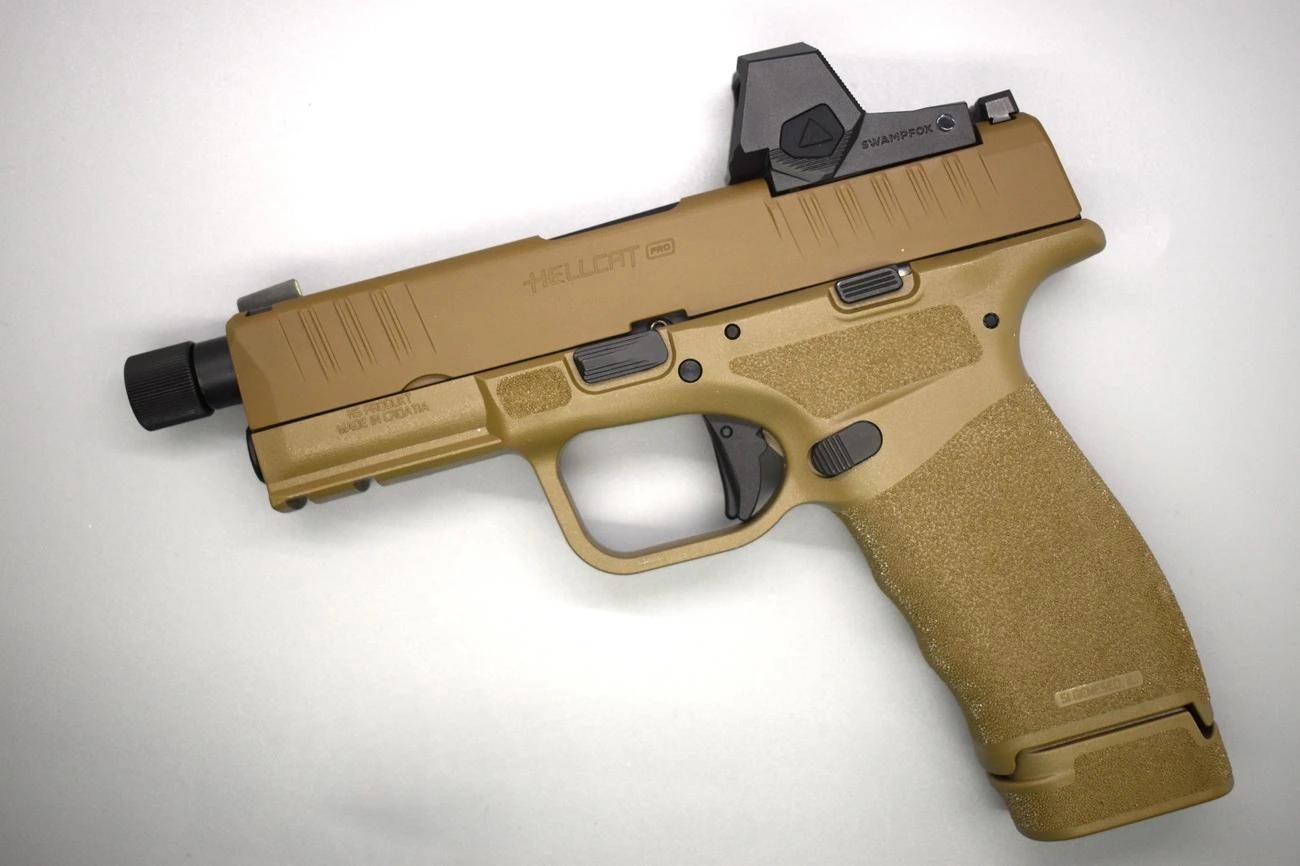
Springfield’s Hellcat Pro splits the difference between the P365 XL and the M&P M2.0 Compact. With a 3.7-inch barrel and 15+1 capacity, it offers the same round count as the M&P in a package that’s 0.6 inches shorter overall and about 3 ounces lighter. The adaptive grip texture is genuinely innovative, providing excellent purchase without the overly aggressive feel of the M&P’s texturing.
I tested the Hellcat Pro alongside the M&P M2.0 Compact during a three-day defensive pistol course, and both guns performed flawlessly through approximately 800 rounds. The Hellcat’s factory U-notch Tactical Rack sights are easier to acquire quickly than the M&P’s standard white dots, and the trigger is competitive—slightly lighter pull weight with a shorter reset.
The Hellcat Pro’s Achilles heel is its relative newness to the market. The original Hellcat had teething problems with extractor tension and striker issues in early production runs. Springfield addressed these problems, and the Pro seems solid, but it lacks the M&P’s decade-plus track record. The aftermarket is also significantly smaller—holster selection is adequate but doesn’t match the M&P’s breadth, and upgrade options are limited.
Choose the Hellcat Pro if: You want maximum capacity in the smallest possible package and appreciate Springfield’s innovative features. The adaptive grip texture genuinely works, and the sights are excellent from the factory.
Choose the M&P M2.0 Compact if: You value proven reliability over cutting-edge features, want deeper aftermarket support, or prefer a longer sight radius for precision work.
CZ P-10C: The Ergonomics Champion
The CZ P-10C flew under the radar for years but deserves recognition as one of the best-shooting polymer striker-fired pistols available. With a 4.0-inch barrel and 15+1 capacity, it matches the M&P M2.0 Compact’s specifications almost exactly. Where it excels is trigger quality and ergonomics—CZ’s trigger breaks cleaner than the M&P out of the box, with less take-up and a crisper wall.
I’ve run the P-10C in USPSA Production division, and the grip angle and trigger combine to deliver exceptional split times on multiple targets. The fiber-reinforced polymer frame feels more solid than the M&P’s, and the factory sights—though not night sights—are more visible than Smith’s white dots.
The P-10C’s disadvantages are practical rather than functional. Finding one in stock can be challenging—CZ’s distribution isn’t as robust as Smith & Wesson’s or Glock’s. The aftermarket for holsters and accessories exists but requires more searching. Magazine availability is adequate through CZ directly but limited at typical gun shops compared to M&P magazines.
Choose the CZ P-10C if: You prioritize trigger quality and pure shooting performance above all else. It’s the gun for shooters who compete seriously or simply appreciate a well-executed design.
Choose the M&P M2.0 Compact if: You want a gun you can buy anywhere, find holsters for easily, and get serviced at any competent gunsmith. Logistics and support matter for guns you depend on.
Walther PDP Compact: The Dark Horse

Walther’s Performance Duty Pistol Compact doesn’t get the attention it deserves, which is a shame because it’s arguably the best factory striker-fired trigger available. The PDP Compact matches the M&P’s dimensions closely but delivers a trigger that feels like a well-tuned single-action rather than a typical striker gun.
During extended range sessions, I consistently shoot tighter groups with the PDP Compact than with the M&P M2.0 Compact. The grip geometry is outstanding, and the SuperTerrain Slide serrations provide excellent purchase even with wet or gloved hands. Walther’s factory optics-ready variants use a modular system similar to the M&P’s.
The PDP’s weakness is market penetration. Walther simply doesn’t have the market share of Smith & Wesson, which means fewer holster options, less aftermarket support, and questions about long-term parts availability. The gun also carries a higher price point—typically $100-150 more than the M&P.
Choose the Walther PDP Compact if: You’re a trigger snob who appreciates German engineering and don’t mind paying a premium for the best factory trigger in the category.
Choose the M&P M2.0 Compact if: You want a gun that’s fully supported by a massive aftermarket and costs less while delivering 95% of the performance.
The Glock 19: Already Covered, But Worth Repeating
We dedicated an entire section to the Glock 19 Gen 5 comparison earlier in this review, but it bears repeating: the Glock 19 remains the default choice for good reason. It’s the gun everyone else is measured against, and if you choose it, no one will question your judgment. The M&P M2.0 Compact is the better-shooting gun for most people, but the Glock’s proven track record and unmatched aftermarket make it the safer bet for institutional buyers and shooters who prioritize parts availability above all else.
Making the Right Choice
Every gun listed here will serve you well. The M&P M2.0 Compact sits in the sweet spot for shooters who want excellent performance, good ergonomics, and strong value without the compromises of micro-compacts or the bulk of full-size guns. It’s my recommendation for someone’s first serious defensive pistol or for shooters looking for a versatile do-everything gun.
Choose something smaller—the P365 XL or Hellcat Pro—if concealment truly matters more than shootability. Choose the CZ or Walther if you’re a serious shooter who wants the absolute best trigger and ergonomics and doesn’t mind working harder to find accessories. Choose the Glock if you value proven reliability and maximum aftermarket support over superior ergonomics.
But for most shooters, most of the time, the M&P M2.0 Compact delivers exactly what they need at a price that won’t break the bank. That’s why it earns our strong recommendation despite formidable competition.
Takedown & Maintenance
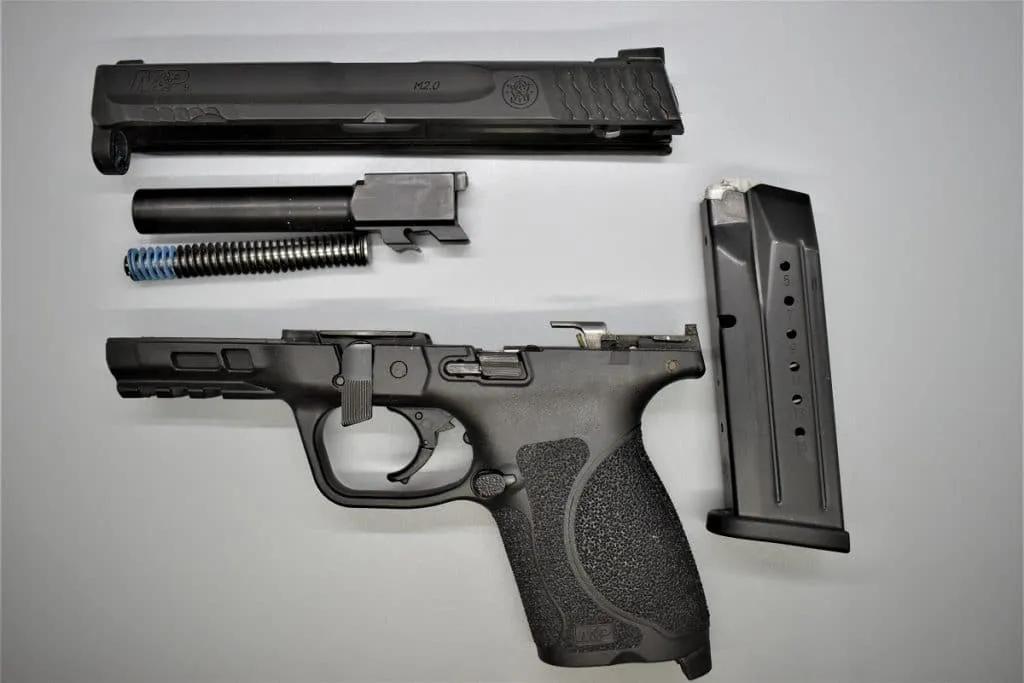
Rather than pull the trigger during the disassembly process– which is how Glocks, and many other striker-fired pistols have to be field stripped– Smith has a sear de-tensioning system built into the M&P M2.0 series.
To use it, with an unloaded pistol, remove the frame tool from the bottom of the grip, take off the palmswell backstrap, then use the tool to push down the yellow-green sear deactivation lever into a lowered position.
From there, the S&W M&P M2.0 Compact breaks down for field stripping in a way identical to popular semi-autos going back to the Walther P-38 of World War II fame. Just drop the mag, make sure the chamber is empty, lock the slide back, and rotate the frame-mounted takedown lever 90-degrees downward.
Then you can push the slide from the frame and remove the barrel and recoil assembly for cleaning.
Smith & Wesson recommends using a “single drop of high-quality firearm lubricant” at eight points in the frame and barrel to ensure it is lubricated against metal-to-metal wear.
More than that, or lube placed in other areas, can result in turning your gun into a mess and work against reliability.
Smith notes in their manual on the handgun that “Excess lubricant can collect quantities of unburned powder and carbon residue, which could interfere with the proper functioning of the pistol.”
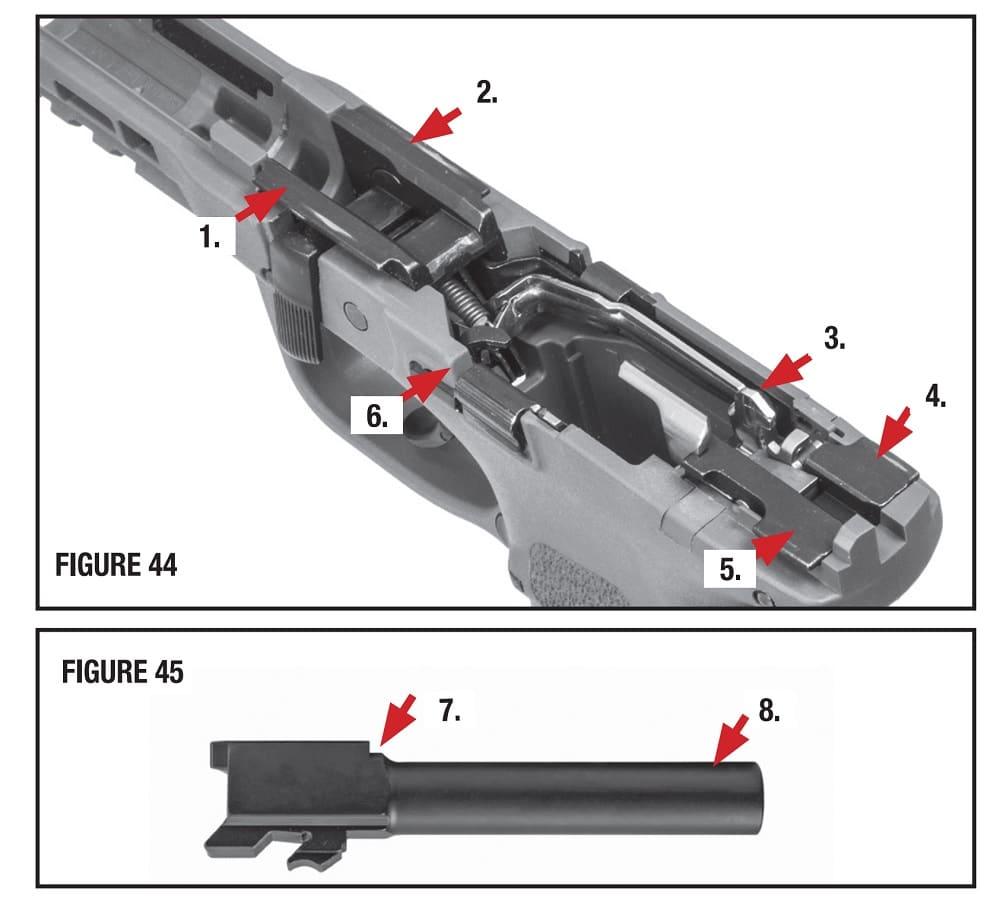
Reassembly is roughly in reverse but without having to recock the sear– simply reinstalling the top half of the pistol will take care of that.
Variants
Smith & Wesson in its latest catalog has at least 23 different variants of the M&P M2.0 Compact cataloged.
Most differences in these variants come from state-compliant (example given, Massachusetts) models with restricted magazines, and in variants with optional frame-mounted manual thumb safeties installed.

Moving beyond that, Smith makes the pistol in both black and flat dark earth (FDE) models, and models with a threaded barrel intended for easy use with suppressors.
The company also offers an even more compact version of the M2.0 Compact, which features a 3.6-inch barrel rather than the standard 4-inch model.
While just under a half-inch shorter, for many, it makes a gun that is easier to conceal and rides better on everyday carry.

Sadly, while S&W’s CORE series of Performance Center M&P variants– with a tuned trigger pack and factory optics cut on the slide to accommodate micro red dot sights– are available in full-size and longslide M2.0s, they do not currently offer the same package for the Compact.
There is a “Law Enforcement Only” model that comes with Tritium night sights and a slide cut, however, and, despite its name can often be had at S&W dealers.
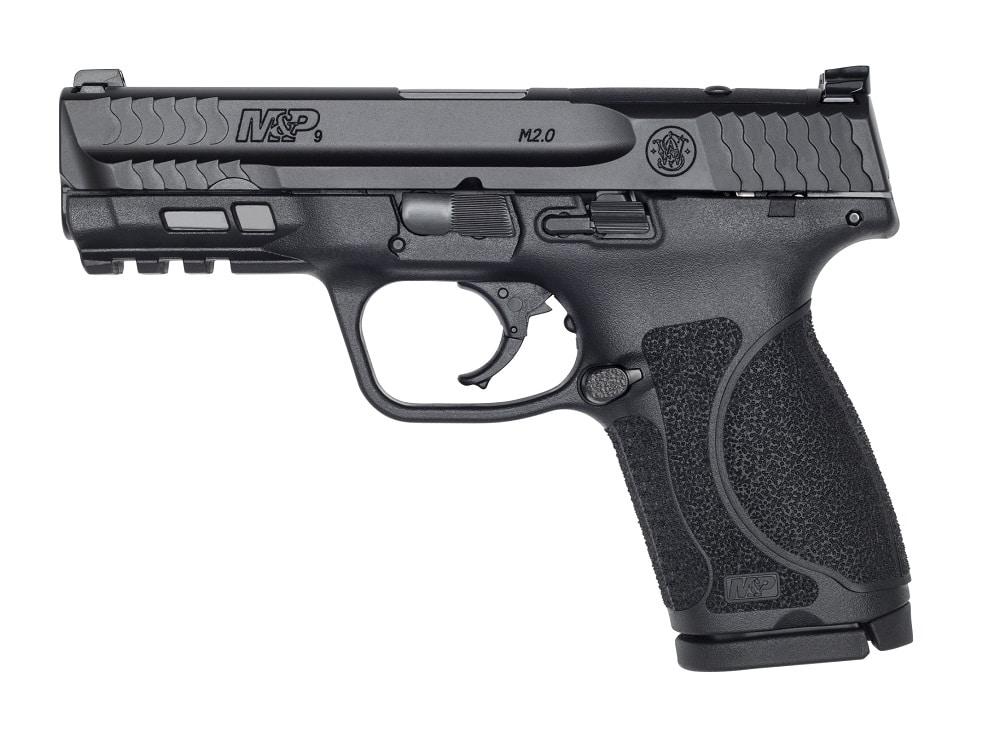
Shortcomings
While it is easy to throw rocks in the gun community, it is hard to find something to aim one at on the S&W M&P M2.0 Compact.
As I have addressed already, it doesn’t have the same tsunami of aftermarket parts and accessories that the Glock 19 can skim from. It also means you might pay more for S&W parts.
For instance, while OEM factory Glock 19 mags can often be had for around $25-$30 with generic imports from overseas hitting half that amount, S&W-branded M&P M2.0 Compact mags run closer to $40 with fewer aftermarket offerings to fill that void.
One could also argue that, with guns like the new S&W M&P Shield Plus, which ships with a 13+1 extended 9mm magazine that is only two rounds less than the M2.0 Compact while being slightly slimmer, shorter, and lighter– thus making it more easily concealable– than the Compact may be obsolete from a size vs capacity frame of mind.
About the worst thing I can say is that fans of hammer-fired metal-framed DA/SA handguns, like the elder school S&W Wondernines for instance, won’t like the M2.0 out of hand, but to be sure, this gun was meant to be completely different so that is an obvious strawman argument.
Updated
December 26, 2025 — Added comprehensive model comparison clarifying Shield vs. Compact naming confusion, detailed head-to-head Glock 19 analysis with specs tables, transparent testing methodology disclosure, optics-ready variant coverage with red dot recommendations, and competitive alternatives.
Sign up for our newsletter
Get discounts from top brands and our latest reviews!




